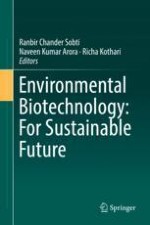2019 | OriginalPaper | Buchkapitel
4. Environmental Health Hazards of Post-Methanated Distillery Effluent and Its Biodegradation and Decolorization
verfasst von : Sangeeta Yadav, Ram Chandra
Erschienen in: Environmental Biotechnology: For Sustainable Future
Verlag: Springer Singapore
Aktivieren Sie unsere intelligente Suche, um passende Fachinhalte oder Patente zu finden.
Wählen Sie Textabschnitte aus um mit Künstlicher Intelligenz passenden Patente zu finden. powered by
Markieren Sie Textabschnitte, um KI-gestützt weitere passende Inhalte zu finden. powered by
